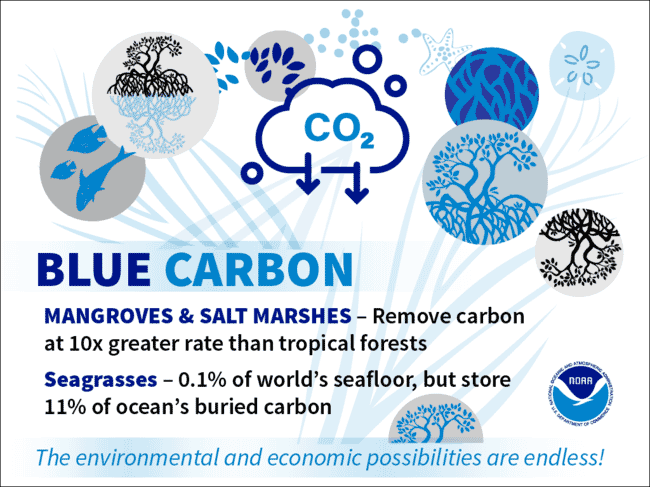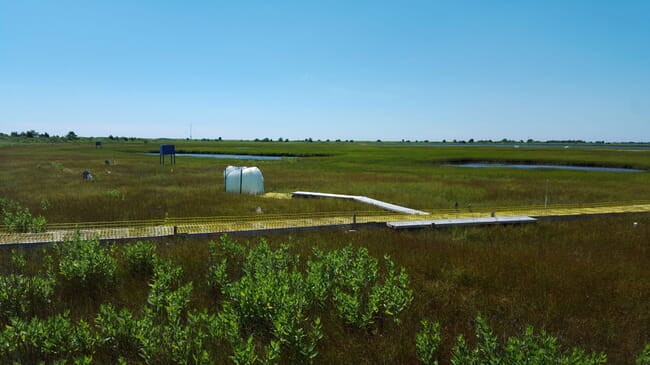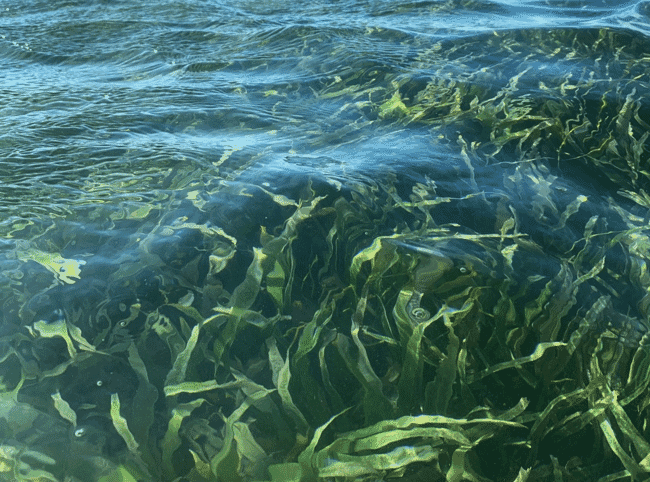
Looking out onto a tranquil coastal marsh, many people would never guess that, beneath its windswept grasses, plants buried deep in the soil have captured and stored vast amounts of carbon dioxide and other greenhouse gasses.
In the race to lessen the damage of climate change, this “blue carbon” held in the nation’s coastal ecosystems is a powerful ally. It incentivises restoration projects and can be traded on global carbon financial markets, which balance projects that feature emissions with contributions that take carbon out of the atmosphere.
Blue carbon also plays an important “green” role in the US Infrastructure Investment and Jobs Act, which directs more than $12 billion dollars to advance carbon capture and removal projects.
NOAA’s National Estuarine Research Reserves are leading the way on the blue carbon front, joined by partners across the public-private spectrum that include the non-profit Restore America’s Estuaries.
Research reserve leaders believe so much in applying blue carbon science that their Science Collaborative programme (co-led by the University of Michigan) has helped fund most of the projects described below. What’s more, NOAA’s land cover programme ensured that blue carbon is included in the US greenhouse gas emissions inventory.
The following examples represent ongoing blue-carbon-related efforts throughout the research reserve system.

© Kris Bayne
Pioneering products travel far
- “Bringing Wetlands to Market,” created by the Waquoit Bay Research Reserve in Massachusetts, was the first-ever US tool and guide on marketing the blue carbon stored in coastal wetlands.
- The Mission-Aransas Research Reserve in Texas adapted “Bringing Wetlands to Market,” presenting it to 318 participants in three cities and four additional research reserves in Florida, Louisiana, and Mississippi. A video gives viewers “the skinny” on blue carbon.
- In Massachusetts and at least five other states, a blue carbon curriculum featured through Teachers on the Estuary workshops has reached 100-plus teachers who have educated more than 2,000 students.
- The Waquoit Bay Reserve and their partners discovered that restoring tidal flow to restricted or degraded marshes reduces emissions of the greenhouse gas methane. These early methane findings have been studied by other reserves.
- Today, the reserve is partnering with the US Environmental Protection Agency on a framework to help New England policymakers incorporate blue carbon considerations into state greenhouse gas policies.

© Ocean Conservancy and The Ocean Foundation
Reserve hosts carbon-offset “first” and mangrove restoration
- Last year, the Philadelphia Eagles pro football team agreed to restore seagrasses and mangroves at NOAA’s Jobos Bay Research Reserve in Puerto Rico as a way to offset carbon emissions stemming from team travel. The Ocean Conservancy and The Ocean Foundation are project partners.
- Another project, the Mangrove Coast Collaborative, has already begun to increase healthy mangrove forests at this reserve and the Rookery Bay Research Reserve in Florida. The collaborative solicits community input and then delivers maps, assessments, and decision-science insights.




